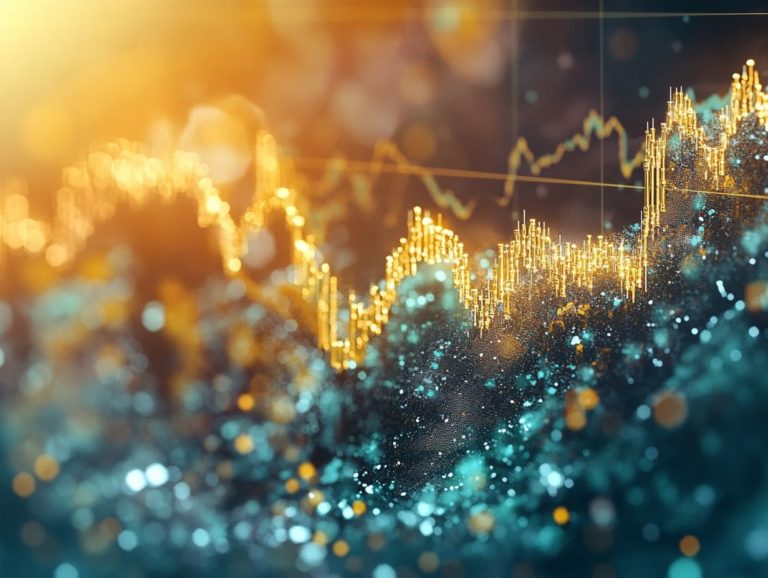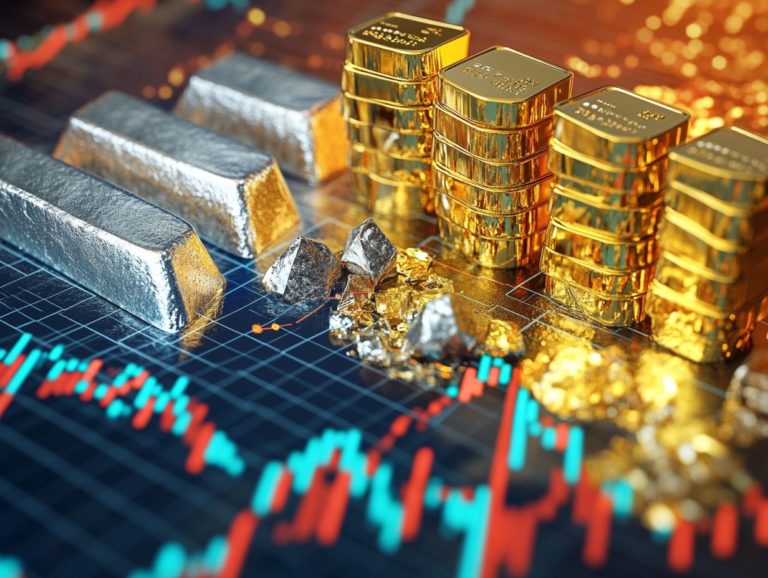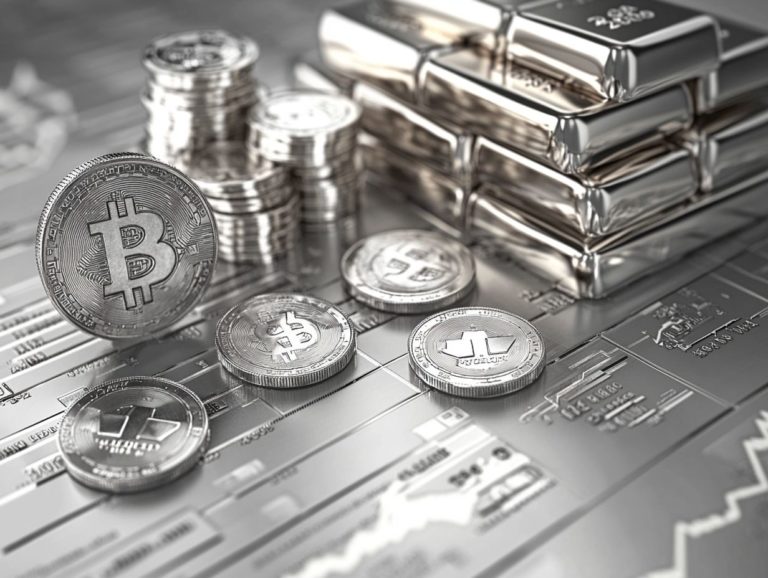Silver Investment Risks: What to Consider
Investing in silver can be a rewarding venture, but it also presents unique risks that you need to be aware of.
Understanding what silver investment entails, as well as the factors that influence its prices and the potential pitfalls, is crucial for you as an investor. From market fluctuations to the challenges of physical storage, navigating these risks wisely is essential.
This article delves into these aspects in detail, providing insights on how you can mitigate risks while maximizing your investment potential. Get ready to uncover valuable insights that could enhance your investment journey!
Contents
- Key Takeaways:
- Understanding Silver Investment Risks
- Factors Affecting Silver Prices
- Risks Associated with Silver Investment
- How to Mitigate Silver Investment Risks
- Frequently Asked Questions
- What are some risks of investing in silver?
- How does price volatility affect silver investments?
- What role does demand and supply play in silver investments?
- How do geopolitical events impact silver investments?
- What is counterparty risk and how does it affect silver investments?
- What should I consider when investing in silver to minimize risks?
Key Takeaways:
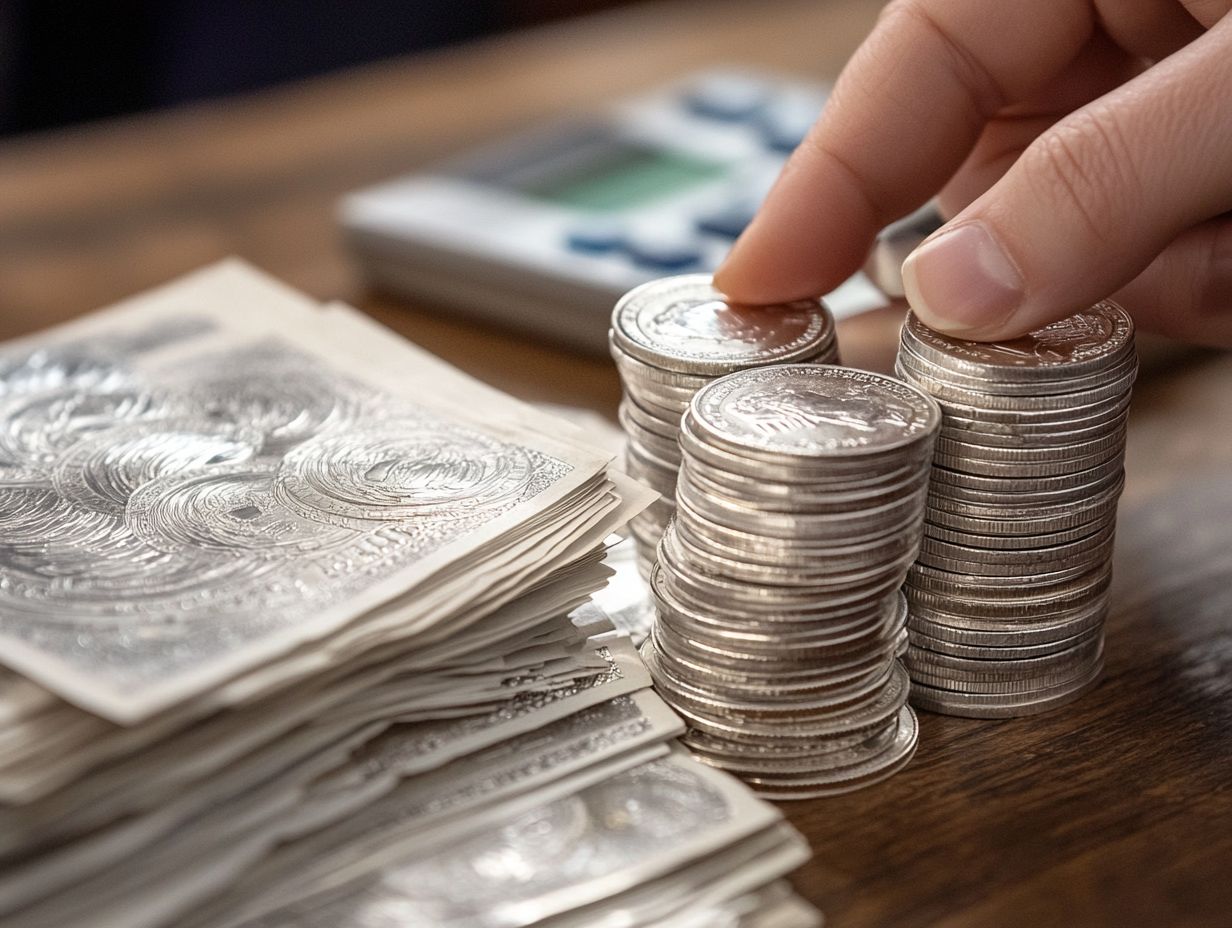
- Consider market fluctuations and economic conditions before investing in silver.
- Protect your investment by properly storing and securing physical silver.
- Diversify your investment and implement risk management strategies to mitigate risks.
Understanding Silver Investment Risks
Investing in silver offers both opportunities and challenges, especially in today s ever-changing economic climate. The allure of precious metals, like silver bars and coins, tends to grow during times of market fluctuations.
It’s essential to grasp these risks if you’re considering diversifying your portfolio with physical silver as a way to protect against rising prices or to manage the speed at which you can convert your investment into cash during economic downturns.
In this exploration, you’ll navigate the intricate facets of silver investment, examining the different dimensions of risk that you should carefully weigh before making your financial decisions.
What is Silver Investment?
Silver investment encompasses various avenues for you to explore, including silver bars, coins, and silver mining stocks. This allows you to diversify your portfolio with tangible assets that can add substantial value.
Each option presents its own set of benefits and risks. For example, when you invest in physical silver such as coins and bars you gain a solid protection against rising prices and economic downturns, but you also face the need for storage and insurance costs.
Silver coins, which can also be valuable to collectors, might introduce some price fluctuations into your investment strategy.
On the other hand, silver mining stocks provide exposure to silver prices, but they can also be affected by operational challenges and management decisions. Compared to gold bullion, silver generally shows higher price fluctuations, which can be both a risk and an opportunity for savvy investors.
It’s important to consider how quickly you can sell your investment; after all, physical silver may not convert to cash as swiftly as stocks or ETFs. This emphasizes the need to understand both the tangible and market aspects of your silver investments, ensuring you make informed decisions along the way.
Factors Affecting Silver Prices
Silver prices fluctuate due to a variety of factors. You’ll find that supply and demand dynamics, market behavior, and overall economic conditions all play significant roles.
These elements are particularly important during inflationary periods, influencing global economic conditions in ways that can make silver’s value rise and fall.
Market Volatility and Economic Conditions
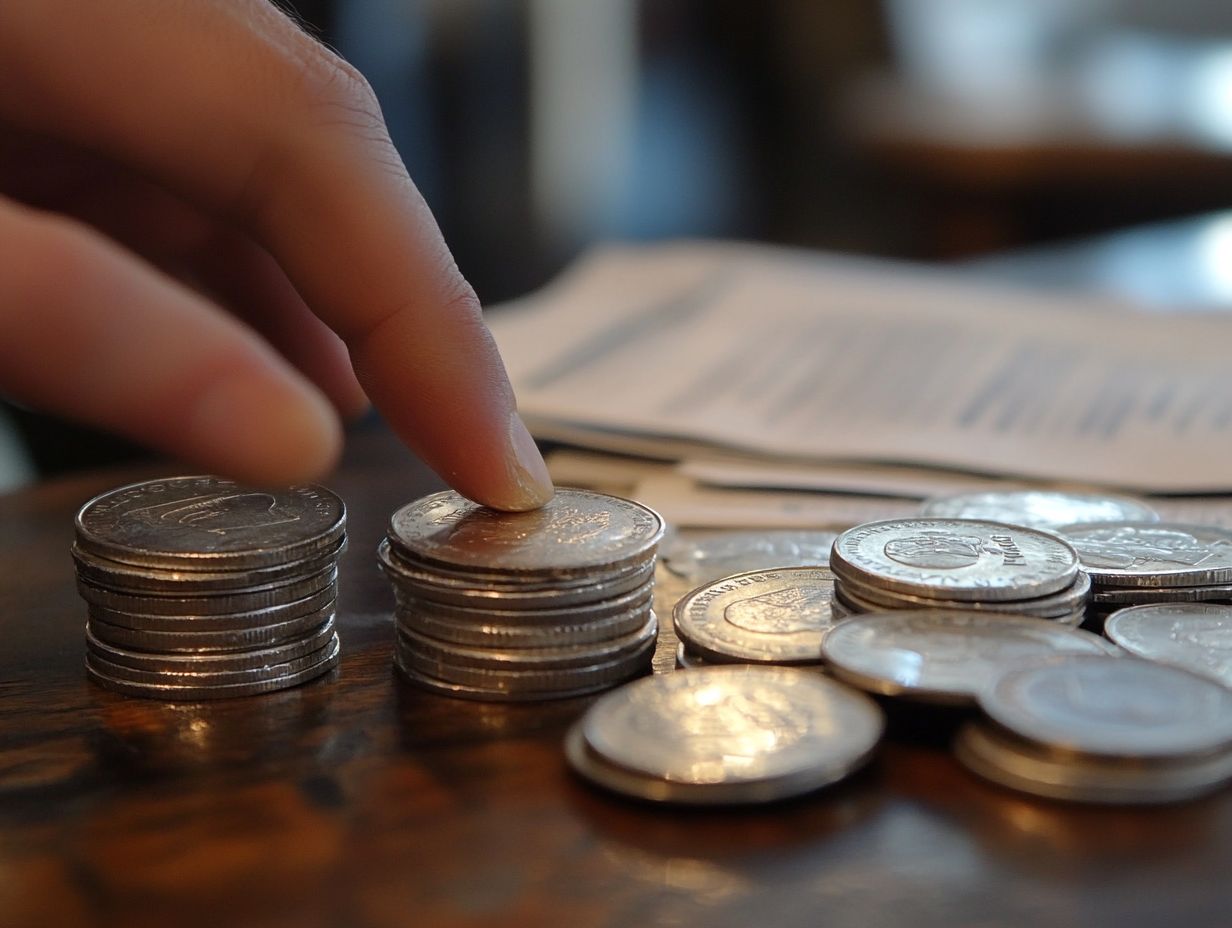
Market fluctuations and prevailing economic conditions significantly influence silver prices. When economic stability wavers, investment strategies often shift, driving demand for silver as a safe haven.
In times of uncertainty such as rising prices or the threat of recession many investors turn to the security of precious metals like silver. Historical examples, like the Great Recession of 2008, clearly show how major economic downturns can increase silver’s value, as investors seek stability.
Economic indicators, including job rates and consumer spending, can further impact market sentiment. When confidence in traditional assets declines, demand for silver tends to rise.
As you navigate the ever-changing economic landscape, it becomes evident that the dynamics of silver prices reflect a complex interplay between market behavior and broader economic trends.
Risks Associated with Silver Investment
Investing in silver presents various risks that you should consider. Price volatility is a significant factor, as fluctuations can be dramatic, especially during an economic downturn.
During such times, demand for silver may waver, directly impacting its market prices. You need to know how these changes can affect your investment in the silver investment landscape.
Market Fluctuations and Inflation
Market fluctuations and inflation are linked forces that profoundly impact silver prices. When inflation rises, you ll often see a corresponding rise in investment demand for silver, as more people view it as a secure asset.
As the purchasing power of fiat currencies money issued by governments that isn t backed by a physical commodity diminishes, it s natural for you, as an investor, to pivot towards tangible assets, which are physical items you can own like silver, to safeguard your wealth.
Historically, during periods of high inflation think the 1970s silver prices soared, underscoring its reputation as a reliable hedge against economic uncertainty. In recent years, with inflation re-emerging as a pressing issue, market volatility has propelled demand for silver even higher.
This dynamic illustrates how external economic pressures can sway investor sentiment, ultimately causing fluctuations in silver s market value. As you seek alternatives to traditional financial instruments that may falter in inflationary climates, silver stands out as a compelling option.
Physical Storage and Security
Investing in physical silver requires careful consideration of storage and security costs, along with the necessity of effective insurance policies to protect against potential losses from theft or damage.
For those drawn to this precious metal, various storage options are available, ranging from home safes to professional vaults. While home storage might seem cost-effective, it carries notable security risks, including the threat of burglary or accidental loss.
On the other hand, opting for safety deposit boxes at banks or secure storage facilities may involve higher fees but provides significantly enhanced protection.
It’s important for you to evaluate your risk tolerance when selecting a storage method, as your comfort with potential risks can greatly influence your decision. Incorporating specialized insurance policies will further protect your investments against unforeseen events, ensuring that any physical silver retained preserves its intended value amidst various risks.
How to Mitigate Silver Investment Risks
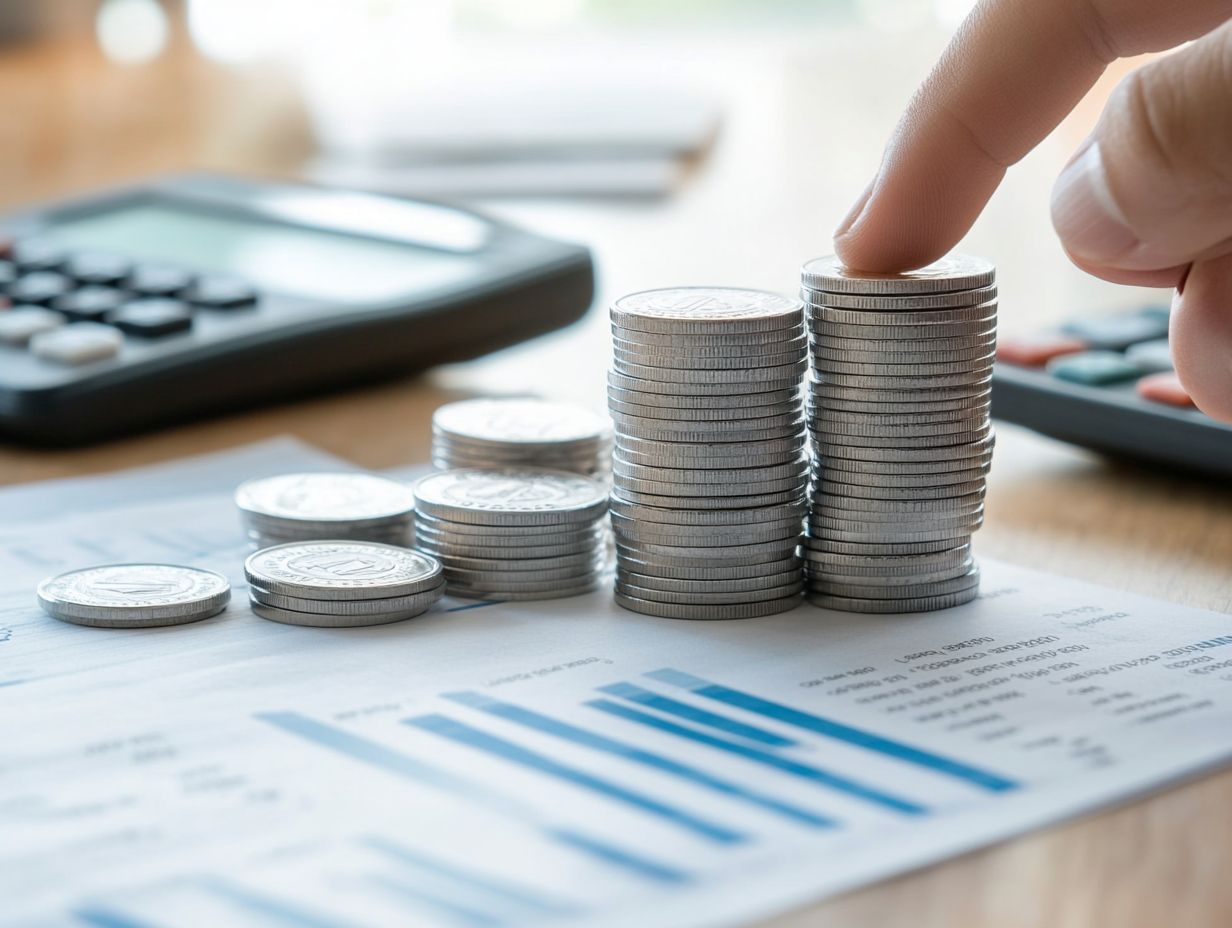
Mitigating the risks associated with silver investments requires you to implement effective risk management strategies while ensuring your portfolio is adequately diversified.
This approach allows you to balance potential losses against anticipated gains, creating a more stable investment environment.
Diversification and Risk Management Strategies
A diversified portfolio is essential for effective risk management, enabling you to spread your risk across various asset classes and minimize exposure to price swings of any single investment.
This strategy becomes particularly relevant when considering silver investments, which can act as a robust hedge against market volatility. By incorporating precious metals like gold and platinum alongside silver, you not only enhance your returns during bullish market phases but also protect yourself during downturns.
As the broader investment landscape continues to evolve, those who embrace diversification find themselves better positioned to seize emerging opportunities while insulating their portfolios from unforeseen risks. In a world where market dynamics can shift rapidly, achieving balance through varied asset allocation is crucial for sustainable investing.
Final Thoughts and Recommendations
Adopting sound investment strategies and seeking guidance from financial advisors can greatly enhance the effectiveness of your silver investments. This ensures you remain well-informed about potential risks.
Understanding silver prices is crucial, as market fluctuations can significantly impact your returns. Don’t miss out on learning about the factors that influence silver’s value, such as economic trends and industrial demand.
Take a long-term perspective with these investments. Quick gains can be tempting, but they often come with significant risk. Talk to financial professionals to create strategies just for you that align with your specific financial goals and risk tolerance.
This not only gives you the power to make informed choices but also aids in crafting a sustainable investment plan that accommodates potential market changes.
Frequently Asked Questions
What are some risks of investing in silver?
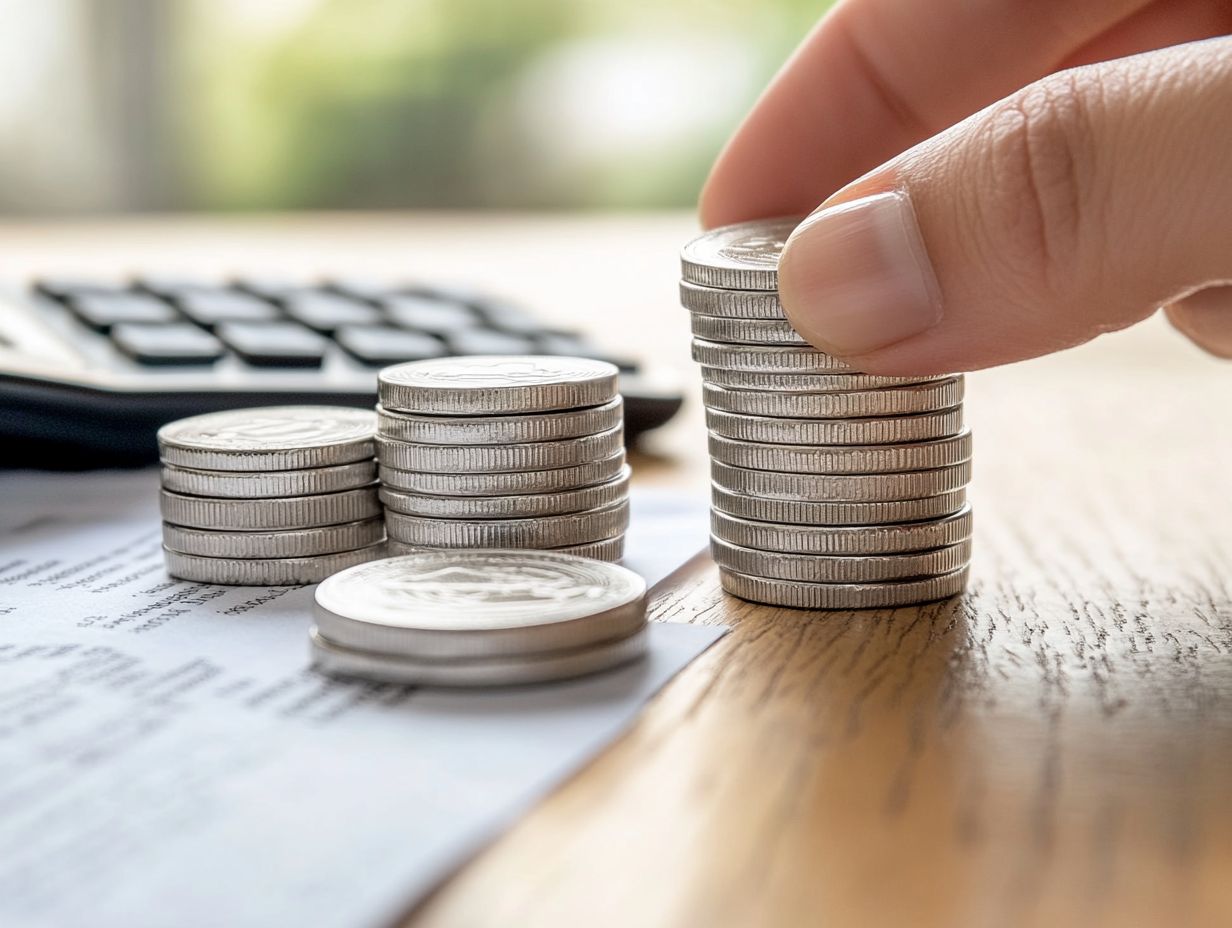
Some potential risks of investing in silver include price volatility, changes in demand and supply, geopolitical events, and counterparty risk.
How does price volatility affect silver investments?
Silver prices can experience significant fluctuations, which can result in potential losses for investors. It is important to carefully monitor market trends and make informed decisions when investing in silver.
What role does demand and supply play in silver investments?
The demand for silver, especially in industrial uses, can greatly impact its price. Changes in supply, such as increased mining production or decreased recycling, can also affect silver prices.
How do geopolitical events impact silver investments?
Political and economic events, such as trade wars or changes in government policies, can affect the value of silver. These events can create uncertainty and potentially lead to price fluctuations.
What is counterparty risk and how does it affect silver investments?
Counterparty risk means that the other party in a deal might not fulfill their obligations. This can be a concern when investing in silver through financial instruments, such as futures or options.
What should I consider when investing in silver to minimize risks?
To minimize risks when investing in silver, it is important to diversify your portfolio, conduct thorough research, and stay informed about market trends and events that may impact the value of silver.










